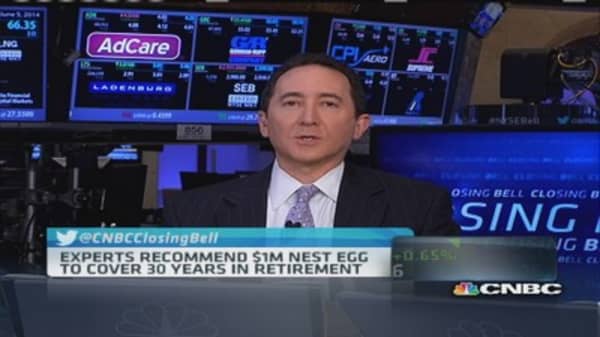In addition to the new cash to invest, John also had a 401(k) plan through his work in which he had a balance of about $300,000. Given that he planned to work another 15 years, the vast majority of funds in his 401(k) plan were invested in stock mutual funds.
Therefore, rather than simply advising him on the dollars that were outside his retirement account, we began a discussion about his overall asset allocation and what he was comfortable with, given the current level of the stock market.
John felt he would be fine with an equity exposure of about 70 percent, with the remaining 30 percent invested in fixed income, along with a smattering of real estate and other alternative investments.
Read MoreHow retirees can counter rising rates
In scenarios such as this, the easiest thing to do is to simply build a portfolio that precisely matches that allocation and then invest all of the new cash accordingly. This is, in fact, what most people settle for. Yet the problem with this approach is that it ignores the tax benefits and tax detriments of retirement plans.
Assets that are held primarily for capital appreciation, such as many stocks and stock funds, can actually benefit from being owned outside of a retirement account.




